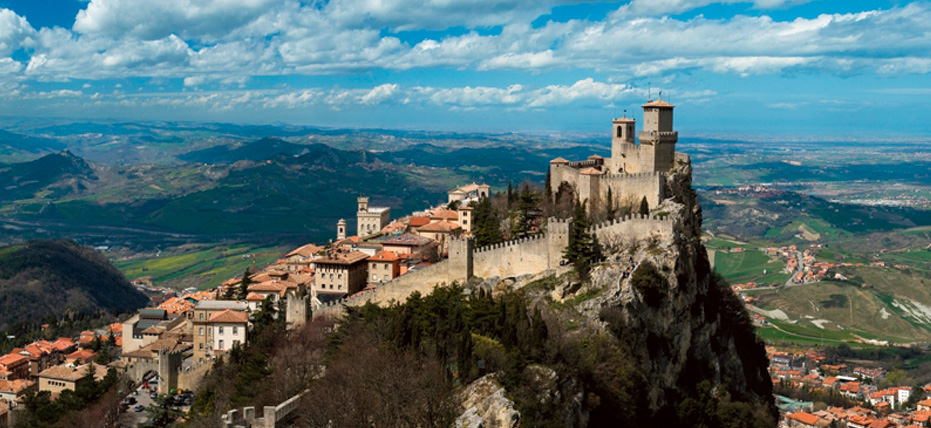 Ravenna and surroundings
Ravenna and surroundings
When fifteen centuries ago RAWENNA became the capital of the Western Roman Empire, it was more a fate than the effect of long historical processes. Emperor Honorius, alerted by the approaching army from the north, he moved his court to this remote little town on the coast of Romagna, because it was easy to defend, surrounded by marshes and situated near the port of Classis - at that time the largest Roman base fleet in the Adriatic. Honorius' anxiety turned out to be justified: w 410 r. Rome had been plundered by the Goths and had fallen into decline, which was matched only by the flourishing of Ravenna. Her glory days were short and in 473 r. also fell into the hands of the Goths. But as a result of this glimpse of fame, Ravenna became one of the most desirable cities in the Mediterranean, and soon the Goths were displaced by the troops of Constantinople., to establish an exarchate here.
Ravenna owes its greatest splendor to the Byzantine rulers, for they wanted to outdo other cities in the splendor of their palaces, churches and art, thus the city has become one of the most important cultural centers in the world. Venice's growing role has added to its prosperity, but in the 16th century. the city was plundered and annexed to the papal state. The coastline has since retreated and now connects Ravenna to the sea, an 11-kilometer canal that runs through a huge industrial sector. However, the relics of the bewildering Byzantine era do not take long to look for here, for example, the collection of mosaics is widely regarded as the pinnacle of the world's surviving Byzantine art.
Contrary to Florence and Venice, there is little fuss about the preservation of monuments - admission to most of them is free, and tourism seems to be a byproduct of Ravenna life, whose residents find employment with chemical plants and oil refineries outside the old city walls. Ravenna was largely razed to the ground during the last war, but there is enough left for a few days of unhurried sightseeing. The most important places, which should be watched, of course there will be churches and mosaics, but the bustling market square with numerous cafes and noisy restaurants is inviting, to come here for the sake of the atmosphere. Nightlife is poor, but in summer there are bathing areas a few kilometers away (admittedly geared to families of holidaymakers) provide some entertainment: you can walk among the rocks, go for a pizza, and sometimes to a disco.
Access and accommodation
From Ravenna train station, located in Piazza Farini, in Piazza del Popolo, the central square of the city, viale Farini and via Armando Diaz. Piazza del Popolo and the adjacent streets form the centro storico. Near the square, at via San Vitale 2, is the AAST office (codz. 8.00-13.00 i 15.00-18.00), where you can buy city maps and tourist brochures.
Unfortunately, the best place, where to stay, is a bit nasty. d,the herbage around the train station. Several hotels are on via Maroncelli, you can also go straight to Roma on via Candiano 26 (• 0544/421515), where does the room cost 40000 L. Another possibility is Al Giaciglio, Via Rocca Brancaleone 42 (0544/39403), with rooms after 32000 L, but it takes longer to go there; still further is Da Danilo, at via Delie Industrie 37 (0544/22799) - two after 31 000 L. The Ostello Dante youth hostel outside the city is a 10-minute walk away, at via Nicolodi 12 (• 0544/420405), where bed and breakfast costs 7500 L, but it is closed from October to March. There are several family rooms here, and in the evening meals are served. Access by bus no 1 in front of the station, stop at the hostel on request.